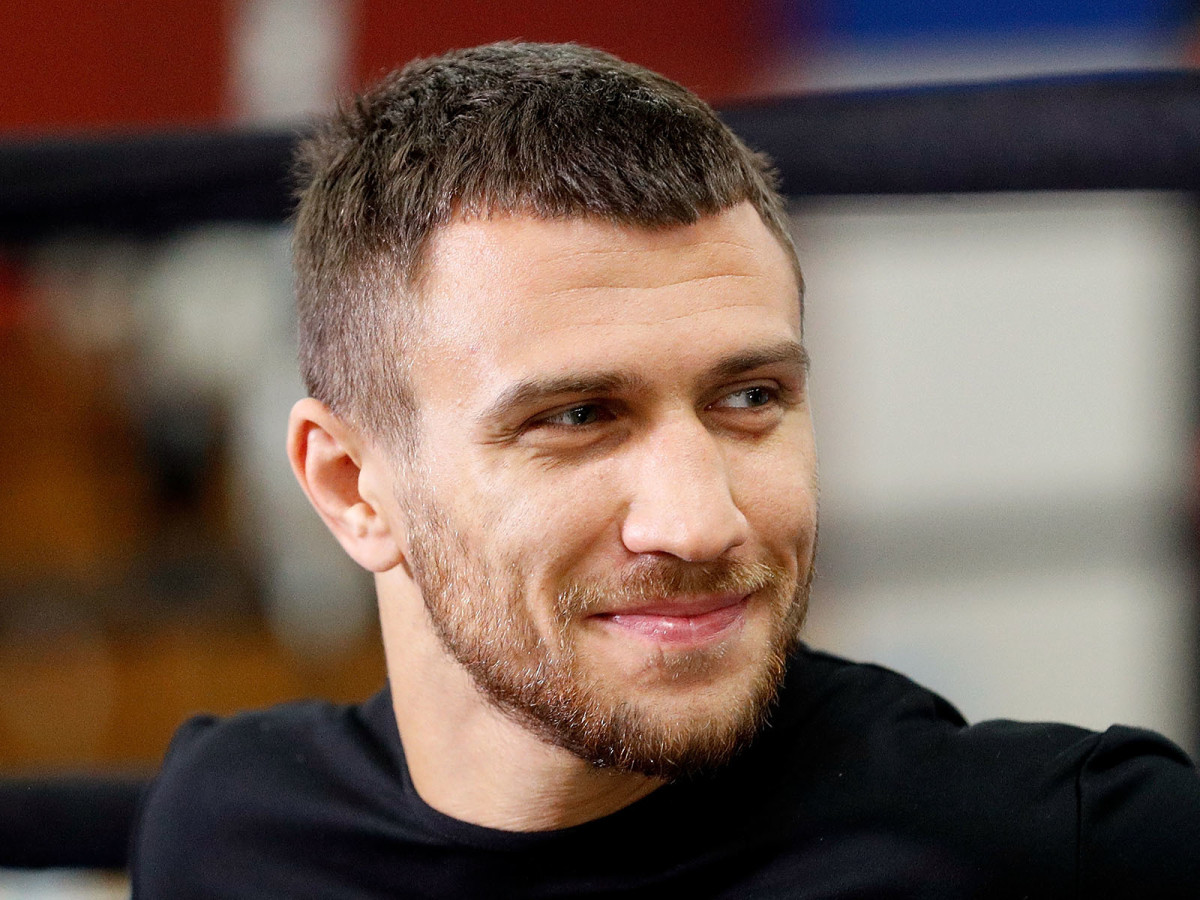Boxing's Ballet Dancer, Vasyl Lomachenko Continues Quest to Become Sport's Next Great Star

The case for Vasyl Lomachenko as boxing’s next big superstar starts before his first professional fight. It begins, actually, in the office of Bob Arum, founder of Top Rank Boxing, promoter of Muhammad Ali, Floyd Mayweather Jr., Oscar De La Hoya and Manny Pacquiao, among many, many others.
Arum sat behind his desk, next to the Louis Vuitton heavy bag encased in glass and framed pictures of him with Ali from decades earlier. Lomachenko entered with his father, Anatoly, who doubles as his trainer, and his manager, Egis Klimas. He had not even sat down before he laid out the condition he most cared about. He wanted a title fight and he wanted one right away. If Arum could deliver said bout, Lomachenko said he would sign with Top Rank.
To land that kind of fight, right away, never happens in boxing, not even for a fighter with one of the most decorated amateur careers in the sport’s history. Some boxers compile 30-0 records without really being challenged. Lomachenko, at 0-0 but with almost 400 amateur victories and two Olympic gold medals to his credit, wanted to face the most difficult possible opposition right away. Arum’s matchmakers looked nervously around the table. They forced smiles wondering if he was serious, only to realize he was.
“From that meeting to the moment I saw his skillset to the way I saw him work, I couldn’t get over it,” Arum says. “I’ve never seen a combination like that in my professional life.”
Lomachenko reminded Arum of Mayweather in that he slipped punches with ease and possessed the feet of a dancer. He never seemed off balance. He made boxing resemble ballet. “He moves,” Arum says, “like he’s playing three-dimensional chess.” But Lomachenko reminded Arum of Pacquiao, too, in that he landed punches from odd angles and sought engagement. He wasn’t just defensive. He wasn’t just offensive. Plus, he took on all fighters like De La Hoya. All of which made for a rare combination of skills.
Accounting even for the usual promoter hyperbole, Arum speaks of Lomachenko the way that promoters speak of only a few boxers in their lifetime. “Watching him fight is like watching a fighter paint a great masterpiece,” he says.

Lomachenko (9-1, seven knockouts) will enter the ring again on Saturday at The Theater at Madison Square Garden. In front another sellout crowd, he will again state his case for mainstream crossover appeal, and he will do so against Guillermo Rigondeaux, an undefeated and skilled Cuban fighter (17-0, 11 KOs) with a similar amateur pedigree. Their super featherweight title bout will be shown on ESPN.
Arum hopes that Lomachenko’s legend grows. He has a built in backstory ready for mass consumption: a fighter raised in the Ukraine, coached by his father and trained in Ukrainian dance, who becomes a national hero and of the best amateurs in boxing history.
That fighter, according to Top Rank matchmaker Bruce Trampler, sometimes works out for five hours without rest. Only Pacquiao compares in the decades Trampler has watched and studied boxers. Lomachenko, he says, “is beyond human.” He’ll spar 15 four-minute rounds with only 30 seconds of rest in between. Then he’ll run through a three-hour workout.
Before his pro debut in 2013, Lomachenko (who did not fight for a title that first night) was seen inside a gym walking on his knuckles, feet in the air, across the ring—after 10 rounds of sparring. Another Top Rank matchmaker, Brad Goodman, saw that knuckle walk and then he saw Lomachenko spar three-consecutive rounds using one hand. If that didn’t sell Goodman, Lomachenko’s triumph over the undefeated Gary Russell Jr. in June 2014 did. Goodman had Lomachenko winning 11 of 12 rounds. He fought Suriya Tatakhun next in China, broke his hand in the third and controlled the fight anyway. The training had worked.
How a Near-Death Accident and a Trip to a Greek Monastery Changed Sergey Kovalev
“Manny had his southpaw style,” Trampler says. “Oscar had his traditional style. This guy is a combination and he may prove to better than anyone we’ve seen in decades.”
So what happens next? That’s the question now for Lomachenko and for boxing. Because Lomachenko is already a star in boxing circles and he’s building a Hall of Fame career. But few outside of the sport’s aficionados seem to know all that much about him. Arum wanted their attention first, anyway, but he’d like to mold Lomachenko, 29, into something that resembles Pacquiao’s career. Pacquiao, of course, became one of the biggest stars in sports.
The case continues on Saturday night in New York City, against Rigondeaux, on national TV. If Lomachenko wins, he will add to his growing legend that started in Arum’s office. If he doesn’t, boxing will once again be looking for its next great star.
